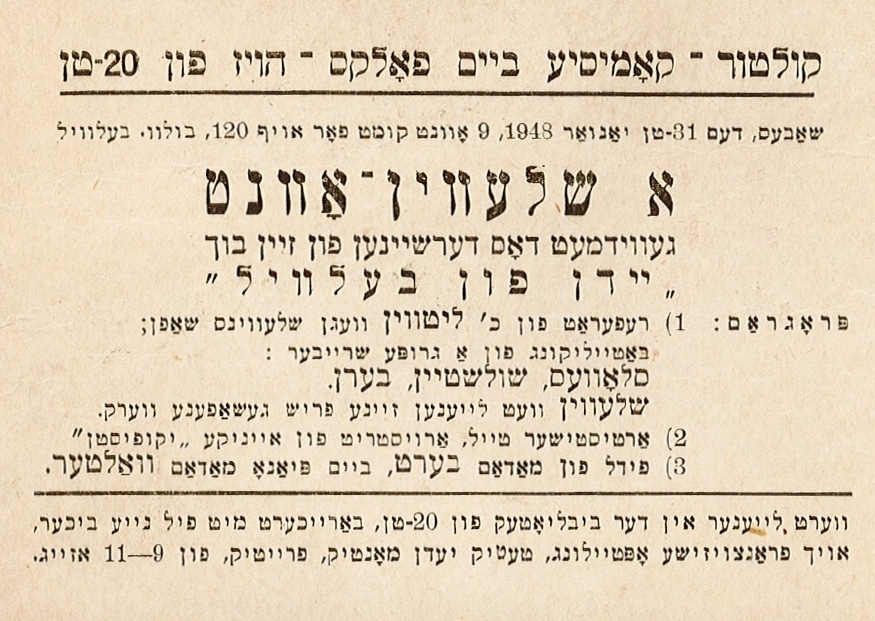Does the creator of Portnoy retain his pungency when rendered in Racine’s tongue? Has the nouvelle cuisine aesthetic – removing all the cream – colored Roth’s treatment by Parisian editors? When he comes out in French, is Roth still becoming?
Is it Indignation or Indignation? Goodbye Columbus or Goodbye Columbus? American Pastoral or Pastorale américaine? Is something lost in translation? Even when the two languages are closely related? Exporting a book is a long process. When Philip Roth still published, his French readers had to wait two years for a translation.
The long lag time raises the following question: does Roth travel well? Does he keep his flavor and his distinctive aroma when he finally gets unpacked and laid out on a French desk? Indeed, texts, like wines and cheeses, are vulnerable when transported over long distances. What makes it through customs and what doesn’t? Might the essence of Philip Roth be contained in those scraps that are weeded out and discarded?
By focusing on two scrappy areas – sexuality and religion –, we shall examine where Roth’s message gets perverted, or rather, doesn’t remain perverted enough. Our method is anecdotal: via a degustation of a few elements that have lost their original taste, we shall come to a general conclusion regarding the menu.
For an aperitif, let’s start with his first book, Goodbye Columbus. In our view – see the French-language essay Corpus Rothi [1] – the story revolves around the themes of animality and fertility. Brenda Patimkin comes to us through references to fish and mammals (mammalia, of course, are animals whose female secretes milk for the nourishment of her offspring). The initial paragraph opposes nature and industry: «The first time I saw Brenda she asked me to hold her glasses. Then she stepped out to the edge of the diving board and looked foggily into the pool; it could have been drained, myopic Brenda would never have known it. She dove beautifully, and a moment later she was swimming back to the side of the pool ». Brenda’s animality contrasts with the artificiality of the swimming pool, an industrial water basin which gets regularly « drained. » As so often with Philip Roth, this last word jars. And with reason: Goodbye Columbus is about drainage. It’s what pays for Brenda’s membership in the Green Lanes Country Club: the money comes from her father’s business, Patimkin Pipes and Sinks.

Yet in French, the meaning gets drained away: « La première fois que je vis Brenda, elle me demanda de tenir ses lunettes. Puis elle avança jusqu’à l’extrémité du plongeoir et jeta un regard brumeux dans la piscine; celle-ci aurait pu être à sec que la myope Brenda ne s’en serait pas aperçue. » Instead of, « it could have been drained, » we get « it could have been dry. » The translator skims the linguistic surface without plunging in.
Pipes and plumbing are fundamental in Goodbye Columbus, whence their reappearance in the penultimate paragraph: « I was standing in front of the Lamont Library, which, Brenda had once told me, had Patimkin Sinks in its rest rooms. »
The narrator’s interest in plumbing extends to both father and daughter. Here too, Roth’s message gets watered down:
« As she walked she zipped the cover on her racket.
Are you anxious to get home?” I said.
No.
Let’s sit here. It’s pleasant.
Okay.
We sat down on a bank of grass slanted enough for us to lean back without really leaning; from the angle it seemed as though we were preparing to watch some celestial event, the christening of a new start, the inflation to full size of a half-ballooned moon. Brenda zipped and unzipped the cover while she spoke; for the first time she seemed edgy. Her edginess coaxed mine back, and saw we were ready now for what, magically, it seemed we might be able to get by without: a meeting. »
While Brenda fiddles with the racket-cover zipper, the reader imagines a different kind of zipper, one that runs down the crotch on a pair of pants, protecting another kind of « plumbing », reproductive. Which connects to the following weird metaphor, vaguely evocative of a pregnancy: « inflation to full-size of a half-ballooned moon ». All of this is reinforced by the bizarre use of the word «christening», a religious ceremony involving the sprinkling of water on a newborn.
Unfortunately for the French reader, his native language comes with two alternatives for the word « zipper »: « fermeture éclair » and « braguette », depending on the context. When the translator correctly chooses the former, Brenda’s nervous gesture lose its fecund double entendre:
« Tout en marchant, elle tira sur la fermeture éclair de l’enveloppe de sa raquette.
– Vous êtes pressée de rentrer chez vous ? demandai-je.
– Non.
– Alors, asseyons-nous ici, c’est agréable.
– D’accord.
Nous nous assîmes sur un pan d’herbe suffisamment incliné pour nous donner l’impression d’être allongés, sans l’être réellement ; vus de profil, on aurait dit que nous nous apprêtions à observer quelque phénomène céleste, le baptême d’une nouvelle étoile ou la venue de la pleine lune. Tout en parlant, Brenda fermait et ouvrait l’enveloppe de sa raquette ; pour la première fois, elle semblait nerveuse. Sa nervosité appela la mienne, de sorte que nous nous trouvâmes mûrs pour ce dont, magiquement, il semblait que nous aurions pu nous passer : une rencontre. »
One goes crazy just imagining the teeth on Brenda’s racket-cover zipper as she absent-mindedly slides it up and down, stroking it. Are they as sharp as those in the girl’s mouth, labored over by top-notch dentists paid for by rich parents? Poor Roth: his « point » gets dulled, for « fermeture éclair » is duller than « braguette. »
Elsewhere too, Roth’s incisive language regarding cuts and cutting, knives and blades and incisions and mutilations, gets blunted after crossing the border. Consider, for example, the passage in American Pastoral where Mary Dawn Dwyer and Lou Lvov conclude their negotiations regarding the religion of Lou’s future grandchildren: « So the deal was cut, the youngsters were married, Merry was born and secretly baptized…» In French this becomes: « C’est ainsi que marché fut conclu, que les jeunes gens furent mariés, que Merry naquit et fut baptisée en secret…» (Pastorale américaine).
In French, the deal was not « cut », but « done » or « closed ». « Cut » – a key term in American Pastoral – gets cut out, despite this being a novel about a family whose business involves cutting leather, and in whose climactic scene the hero’s father gets his head cut with a kitchen fork. If Roth’s original tongue sounds slightly out of joint, it’s with reason: he wishes to place a stopcock in the poetic plumbing in order to focus his reader’s attention. The French translation doesn’t cut below the surface. It skims over expressions that cut against the grain, that deserve our sharpest attention.
Let’s cut to another late work, Indignation, where we see Roth hewing away at the same theme: « « Great,” he said. “All I need is for a cunt like that to slit her wrists in my LaSalle. » » When the French translator takes a cut at this passage, the result can’t help but provoke a certain feeling of …in-dig-na-tion!: « – Bravo, a-t-il dit. Manquerait plus qu’une pouffe comme ça vienne s’ouvrir les veines dans ma LaSalle. » While nothing could do justice to the word « cunt » – happily, the French do not follow the American custom of censoring certain anatomical terms, – «pouffe», an abbreviation for « pouffiasse » (a vulgar or ridiculous girl), doesn’t cut it.
Let’s cut to the quick: why all these references to cutting and incisions? Might it be related to that unkindest cut of all, the one male Jews receive eight days after their fall from the maternal tube, along with excess drainage? In terms of its importance for Philip Roth, that event is clearly a cut above the rest: « The pastoral stops here and it stops with circumcision. That delicate surgery ». (The Counterlife) It’s the blade that makes the Jew. Every bit as sacred as Siegfried’s sword, it guarantees the paternal heritage. Yet, when French translators cut their teeth on this imagery, they blunt the rough edges. Are they cut off from the joke due to their secular culture?
Then there’s the French resistance to repetition, a superstition not shared by Philip Roth. Come take a look at how Roth keeps coming back to the verb «to come»:
« SHE
You want me to come over now, six o’clock. I’d be there by six thirty. I can come home with some groceries […]
HE
What time are you coming? »
(Exit Ghost)
In French, it comes out thus:
« ELLE
Vous voulez que je vienne vous voir maintenant, à six heures. Je pourrais être là à six heures et demie. Je peux rentrer à la maison avec les courses […]
LUI
A quelle heure serez-vous là ? »
(Exit le fantôme)
For two out of three occurences, the French reader doesn’t get to see the «come », the thing most worth coming for!
Our discussion would be incomplete without mentioning Portnoy’s Complaint, so here’s a comely example fom that novel: « « I know a poem,” I said, speaking somewhat as though I were drunk, as though I could lick any man in the house, “and I’m going to recite it’” ». On a superficial level, « lick » means « vanquish. » But it’s an ambiguous term much beloved by Roth (e.g. the ice cream scene in Zuckerman Unbound), particularly since Portnoy, sitting in a car, has just received a fellation from the novel’s heroine, bringing the verb’s other meaning up to the surface. In French, this becomes: « « Je sais un poème », dis-je en parlant un peu comme si j’étais saoul, comme si j’étais prêt à rosser n’importe quel adversaire éventuel, « et je veux te le réciter. » » (Portnoy et son complexe) The French reader has no idea that Portnoy’s fantasy about « thrashing » a potential « opponent » is not merely bellicose but also erotic, that he’s musing about imitating his own Muse – taking a lick at the same man (the only one « in the house ») that she just finished licking. He feels « drunk » yet desires more drink. He’s certainly come to the right « watering hole »! Here again, it becomes one to be bilingual, to master two tongues.

Steven Sampson © Franck Lussato
For those who missed the double entendre, Roth takes a second lick at it shortly thereafter: « “Well,” she said, licking my prick, “it’s a serious offence.” » In French this becomes: « « Oui, mais », dit-elle en me léchant la queue, « c’est un délit sérieux. » » Roth clearly likes coming back to the scene of a crime. By double dipping in his use of the verb « lick », he shares the word’s complex flavor with his reader.
Though erotic suggestion certainly spices up Roth’s oeuvre, it’s not the only distinctive element to his gastronomy. Like many great chefs, he packages his art in carefully-assorted colors, though his hues and tones tend to fade when sent abroad: « The day after Lucy’s wedding Whitey came down to breakfast wearing a tie with his workshirt […] at home in the evening he took out the box of brushes, rags and polish and gave his shoes a shine […] When the weekend came Whitey whitewashed the basement and chopped practically a whole cord of wood; Willard stood at the kitchen window watching, bringing down the axe in violent, regular whacks ». (When She Was Good )
As mentioned in Corpus Rothi, this passage represents the cleanest example of Roth’s fascination with the color white. The word is contained in the character’s Christian name; the paragraph is about « cleaning » and « whitewashing »; and, finally, the language itself forms a musical variation on « w », with Roth whittling down his writing, willing it into a window on the wide world of whiteness (try translating that!).
Obviously, in French, this is difficult to duplicate, particularly since one of the other characters from When She Was Good, Blanchard, is not even present in this passage: « Le lendemain du marriage de Lucy, Whitey descendit pour le petit déjeuner portant une cravat avec sa chemise de travail […] le soir, à la maison, il prit la boîte de brosses, de chiffons et de cirage et donna à ses chaussures un brilliant de veritable professionel […] Lorsque vint le week-end, Whitey passa tout le sous-sol à la chaux et débita pratiquement toute une corde de bois ; Willard, penché à la fenêtre de la cuisine, le regardait abattre la hache à coups violents et réguliers ». (Quand elle était gentille)
Colors come up again in The Human Stain. One of the more egregious mistakes in La tache involves the reference to the letter A, which had been sewed to the bosom of Hester Prynn’s gown in Nathaniel Hawthorne’s novel, The Scarlet Letter.
« the twelve-word message, intended as an indictment, filling the sheet from top to bottom:
Everyone knows you’re
sexually exploiting an
abused, illiterate
woman half your
age.
The writing on both the envelope and the letter was in red ballpoint ink.»
In the French version, the publisher has not respected the original layout of the page with its inverted-A. This obscures the reference to Hawthorne and to the black-and-white color scheme of colonial New England [2].
« C’était un message de vingt et un mots, accusateur, qui remplissait toute la page.
Il est de notoriété publique
que vous exploitez sexuellement
une femme opprimée et illettrée
qui a la moitié de votre âge.
L’adresse comme la lettre elle-même avaient été écrites au stylo bille rouge. »
Would it be precocious if we now came to a conclusion, cutting to the quick, taking another lick at translators? Have we unfairly cut them down by criticizing their tongue? Does the reader have trouble swallowing our argument? Do our comments regarding Roth in translation cut two ways, calling attention to gaps in the host text?
We would maintain, in line with the Romantic reading of Paradise Lost – a book admired by Roth – that important works of literature have hidden meanings. That one must strip away the textual surface with a scalpel. That one needs to dive into the deeper currents, those flowing underneath, near the drainage pipes. Only then may one swim freely.
Would the ideal translator be like the perfect girlfriend in Roth’s fictive universe, applying her native tongue in order to bring forth his brightest colors, tapping into his deepest currents? One thinks of Debby Harry, who grew up in Hawthorne, thirty kilometers from Newark, dying her hair the way Roth’s heroes like it, following her elder’s lead by teasing her public, treating it as a collective voyeur:
« Color me your color, baby
Color me your car.
Color me your color, darling
I know who you are.
Come up off your color chart
I know where you’re coming from… »
Roth and Blondie: two New Jersey artists into chromaticism and repetition, coming at reality from their own angle. Before pouring Roth into a French mold, shouldn’t we fix his true color and find out where he’s coming from?
Is a translator’s work so draining that he should be forgiven throwing out the baby with the bath water? Does Roth deserve this comeuppance?
-
Corpus Rothi : Une lecture de Philip Roth, Léo Scheer, 2011.
-
See Corpus Rothi II : Le Philip Roth tardif, de Pastorale américaine à Némésis, Léo Scheer, 2012.



![Amadou Barry, Journal d’un exilé, Paris, Julliard, 2025, 253 p. Abdoulaye Soumah, avec Thomas-Louis Novillo, Je ne voulais pas partir, Paris, Grasset, 2025, 123 p. Amets Arzallus Antia, Ibrahima Balde, Petit frère. Miñan [2020], tr. de l’espagnol par Roland Béhar, Paris, Payot, coll. « Bibliothèque Rivages », 2024, 203 p. Collectif La Famille Rester. Étranger, Rester. Étranger, Montreuil, B42, coll. « Sentiers », 2024, 208 p. Taina Tervonen, Les veilleurs. Cinq vigies, autour des frontières](https://www.en-attendant-nadeau.fr/wp-content/uploads/2025/03/33677313943_b7d3b5f635_k.jpg)








